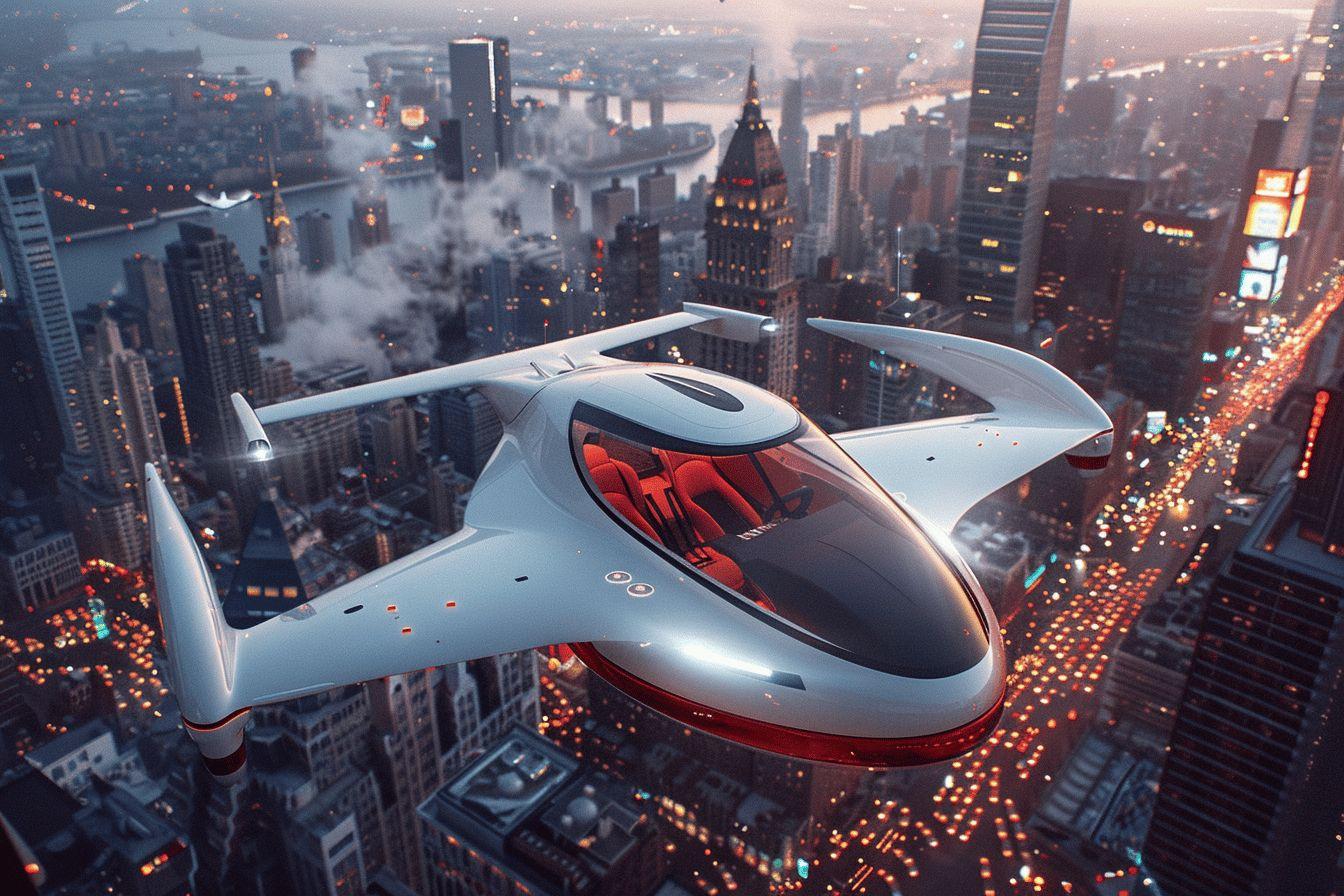Japan is at the forefront of innovation in urban transport with the development of electric flying cabs. These futuristic vehicles promise to metamorphose mobility in Japan’s major cities, offering an aerial solution to traffic congestion problems. Let’s take a look at the recent advances and future prospects of this promising technology, which is arousing the enthusiasm of experts and the public alike.
The rise of flying cabs in the land of the rising sun
Japan, renowned for its technological innovation, has embarked on an exciting race to develop and market flying cabs. These vehicles, known as eVTOL (electric Vertical Take-Off and Landing), are designed to take off and land vertically, while being powered by electric motors. Japanese companies, backed by the government, are working hard to make this vision of aerial urban transport a reality.
Among the major players in this revolution is SkyDrive, a Toyota-backed start-up, which completed an impressive 4-minute test flight with its SD-03 prototype in August 2020. This demonstration marked a decisive turning point, proving the viability of the concept. In 2021, SkyDrive reached a crucial milestone by obtaining the first safety certificate in Japan for a flying cab, paving the way for commercialization envisaged as early as 2023.
Other companies such as NEC and AutoFlight are also contributing to the advancement of this technology. NEC carried out a one-minute demonstration flight in August 2019, while AutoFlight delivered its first eVTOL Prosperity aircraft to a Japanese operator in April 2024, a world first for a civil eVTOL of this scale.
A booming industrial ecosystem
The craze for flying cabs in Japan has given rise to a veritable industrial ecosystem. No fewer than 21 companies are involved in these innovative projects, including aerospace giants such as Airbus and Boeing, as well as renowned automakers like Toyota. This collaboration between different sectors testifies to the scale and complexity of the challenge.
Here’s an overview of the key players and their contributions:
- SkyDrive: Development of the SD-03 and award of the first safety certificate
- Toyota: massive $500 million investment in Joby Aviation
- Suzuki: Partnership with SkyDrive for development and marketing
- NEC: Demonstration flight in 2019
- AutoFlight: Delivery of first eVTOL Prosperity for Osaka World Expo 2025
This synergy between the various players aims to accelerate the development and launch of flying cabs. The ambitious goal is to start mass production as early as 2026, with large-scale deployment scheduled for 2030. This timetable testifies to Japan’s determination to become a world leader in this emerging field.

Technical and regulatory challenges
Despite the enthusiasm and progress made, the road to commercialization of flying cabs remains fraught with pitfalls. Engineers and authorities must overcome several major challenges to ensure the safety and efficiency of these new modes of transport. Here’s a summary of the main issues to be resolved:
| Challenge | Description | Importance |
|---|---|---|
| Autonomy | Increase flight time for longer trips | Critical |
| Speed | Optimize cruising speed for fast travel | High |
| Safety | Ensure maximum aircraft reliability | Essential |
| Regulations | Establish an appropriate legal framework for commercial operation | Essential |
Engineers work tirelessly to improve battery performance, optimize aircraft aerodynamics and develop advanced control systems. Safety remains the top priority, with rigorous testing and strict certifications imposed by the Japanese authorities.
In addition, the integration of flying cabs into urban airspace requires the development of new regulations. The Japanese government, which has been actively supporting this sector since 2018, is working closely with industry to create the right legal framework for this revolutionary technology.
Future prospects for urban mobility in Japan
The advent of flying cabs in Japan is part of a broader vision of urban mobility in the future. These aerial vehicles are seen as an innovative solution for decongesting cities and offering a fast, environmentally-friendly transportation alternative. Their deployment could considerably reduce journey times and improve quality of life in densely populated urban areas.
The Osaka World Expo 2025 will be an exceptional showcase for this technology. AutoFlight’s eVTOL Prosperity will be giving demonstrations, offering the public a concrete glimpse of what tomorrow’s urban transport could be like. This international event is expected to generate increased interest in flying cabs and position Japan as a leader in this field.
In the longer term, the aim is to fully integrate flying cabs into the multimodal transport network of major Japanese cities. This revolution in urban air mobility could radically transform the way we get around, paving the way for smoother, more sustainable cities. Japan, with its technological expertise and culture of innovation, seems well positioned to rise to this challenge and shape the future of urban mobility.


